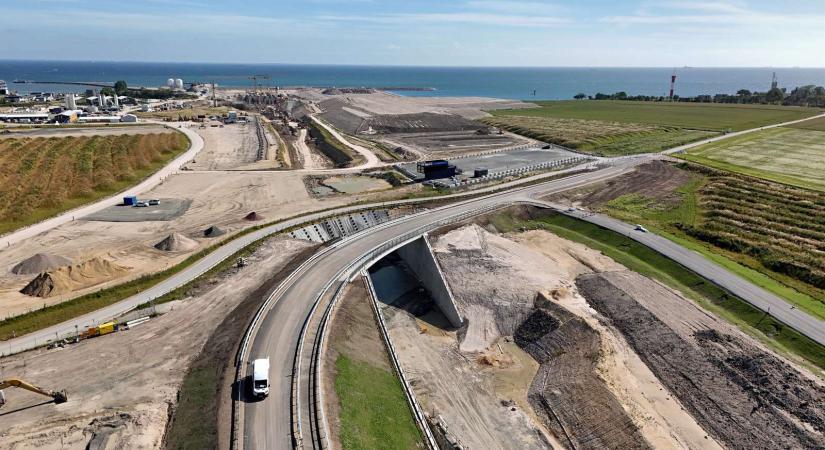Fehmarn Project Challenged: Difficult to Reach Opening in 2029

Challenges with the special vessel IVY have significantly delayed construction of the Fehmarnbelt Tunnel between Denmark and Germany, Sund & Bælt announced in a press release.
The 18-kilometre immersed tunnel is being built with 73,500-ton concrete elements, each 217 metres long, which are lowered and joined on the seabed.
These elements are considerably heavier and larger than the ones used to build the Øresund Tunnel. In addition, the work takes place at an average water depth of 30 metres – twice as much as at Øresund – which requires an advanced and unique vessel with complex mechanical and electronic installations.
The purpose-built vessel has not yet been fully tested and approved by the authorities, and its completion is now 1.5 years behind schedule. With the current delay of IVY, it is considered difficult to complete the tunnel according to the original timetable.
“The Fehmarnbelt link is the world’s longest immersed tunnel. It is a megaproject, and with that come inevitable challenges and unforeseen events. IVY is a prototype, specially built for us, and it has required more time than anticipated,” says Mikkel Hemmingsen, CEO of Sund & Bælt, the project owner.
More challenges
It is uncertain how much of the lost time can be regained in the coming years.
When the construction contracts were signed in 2016, the German regulatory approval for the project had not yet been obtained. Therefore, the specific conditions – for example, regarding noise emissions from work vessels – could not be incorporated into the contracts. This may complicate a later acceleration of the construction process.
“The contracts are soon 10 years old, and they were made before both Covid-19 and the war in Ukraine, and before we knew the full extent of the German regulatory requirements,” says Mikkel Hemmingsen.
Ongoing dialogue with Germany
Sund & Bælt is in continuous dialogue with the German authorities to find practical solutions regarding both underwater noise emission limits and sediment spill in German waters. In addition, part of the tunnel trench still needs to be levelled with gravel, as supplementary geotechnical investigations have shown that some sections are about 30 cm deeper than planned.
The other part of the project – the Danish railway works for the Fehmarnbelt Tunnel, consisting of 110 km of new double-track railway from Ringsted to Rødby – is on schedule.
The overall project can still be carried out as a user-financed facility, as provided for in the Construction Act.






